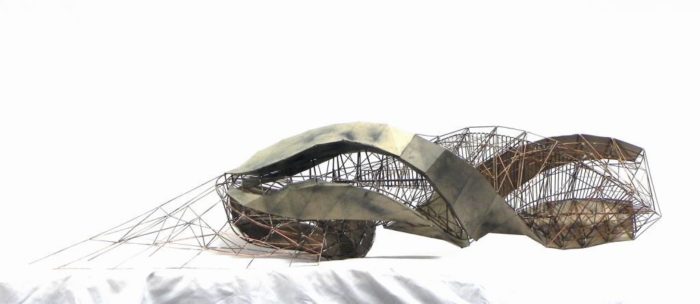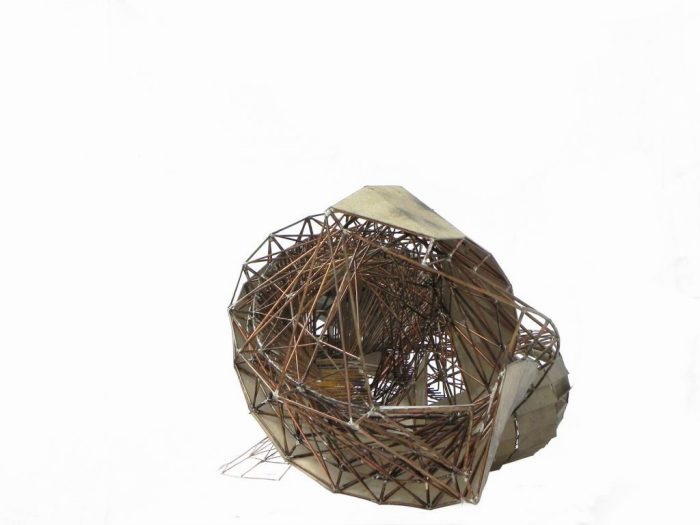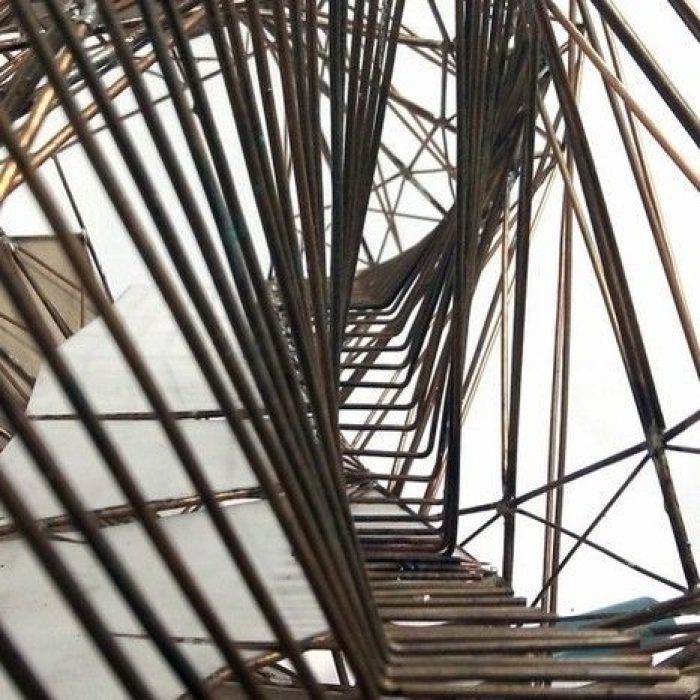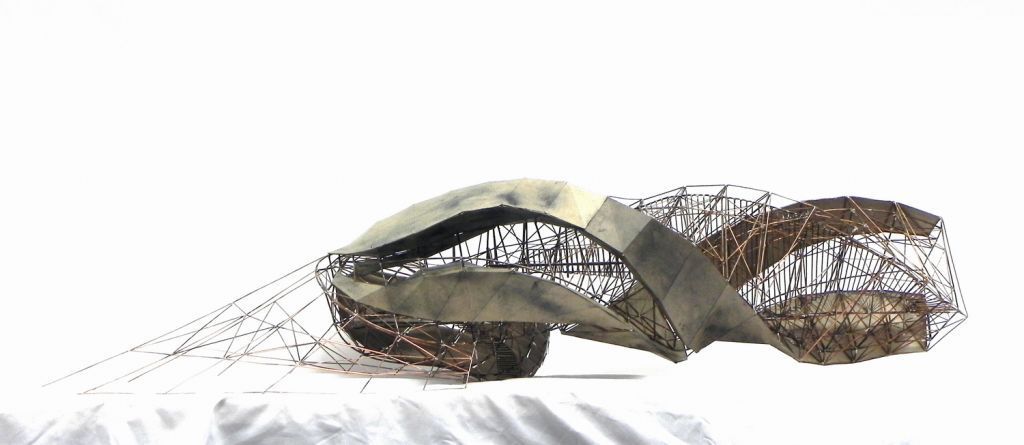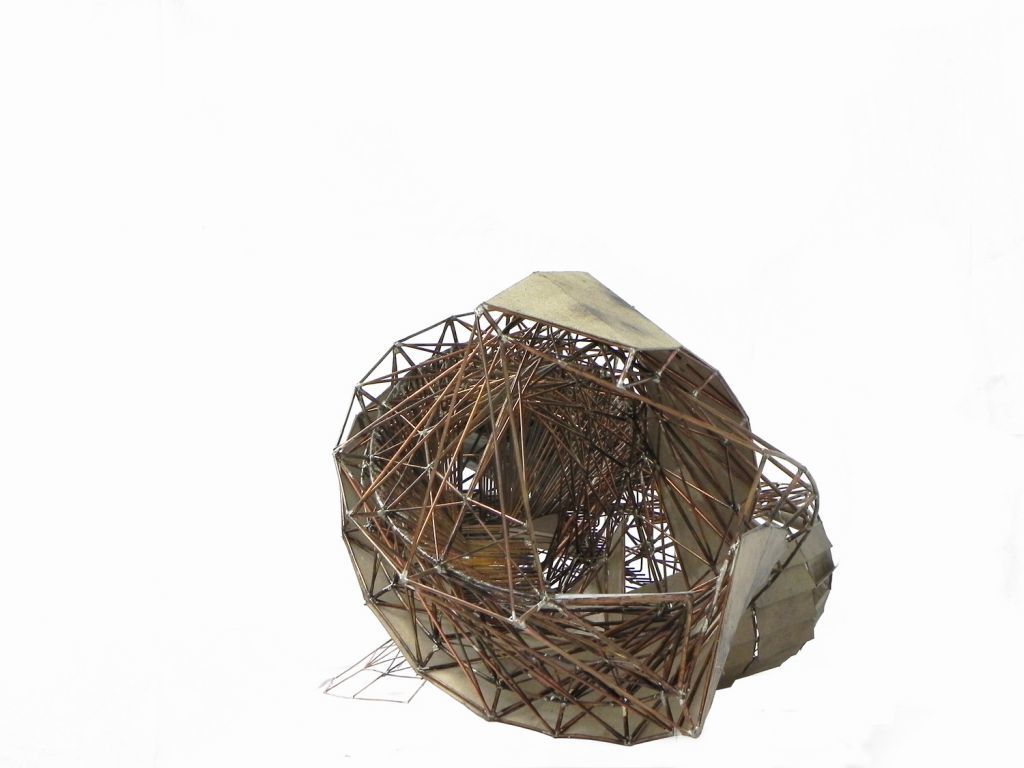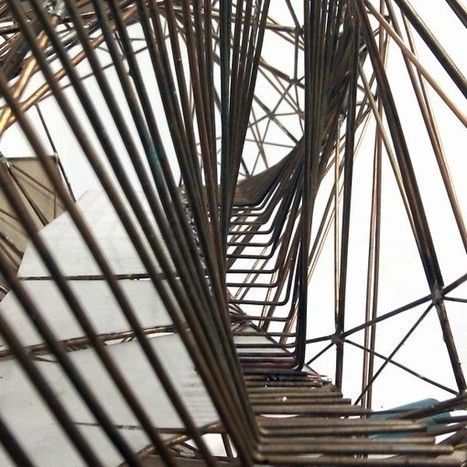This is the thesis, created and executed by me, Matt Davis, for my B.Arch from Virginia Tech. It is entitled 4 Lines of Architecture. The pictures you see are pictures taken of a 3/8 inch=1 foot model constructed of soldered copper wire of differing gauges. The largest gauge- that of the lines is representative of 4 inch tube steel.
The thesis began with the breaking down of the ‘primitive hut’ into four basic building components- Floor, Stair, Window, and Enclosure. The four elements were each assigned a line. Each of these four is a form-giver to the construct, which is an observation post for Meteor Crater in Arizona, USA. The kicker is that each element has to look back to its line- no matter where it happens to be in the section (top, bottom, left, right)- for its support and structure. If the line is on the top, then perhaps it is hung; on the side? Then there’s a cantilever to deal with.
This move, of forcing each element to cope with its situation, is aimed at producing a reactive architecture. One that leaves behind the mundanity that has consumed much of architecture today. Too many stairs are egress only. Windows are there only to fulfill lighting and (maybe) fresh air requirement. Everything is supported from below.
The lines begin at their conventions, move forward and upwards, wrap inside-out of one another, and the spiral around each other. Thus, no system is ever in stasis. There is the constant need for the reexamination of how an element is executed within the section, at that particular moment. Perhaps the solution at a particular point isn’t strong enough to go it alone, then the element must couple and cooperate with another to achieve stability- this occurs at Floor2+Stair3, and Floor3+Stair3. Both of these situations are about the resistance of moment. In the first occasion, the stairs’ cantilever creates a downward moment, while the shape of the hung floor support and its corresponding centre of gravity, creates an upward moment. The two meet and connect at the handrail, neutralizing the moments and creating a sort of ‘hammock’ within the space.
The whole scheme was designed beginning with the stairs. Stairs used to be about an act of ascension. Now they are egress. If you have to take the stairs, you take the stairs to the floor and the floor to the place. They are only a means to an end. In the Observation Post, the stairs take you all the way to the focal point with the possibility of stepping off and dwelling once you’ve gotten there. These are stairs that are involved.
The structure stands at the lip of the crater and cantilevers out over the edge. The four lines make up the centers of four structural X-brace spines which are in turn connected by further X-bracing in-between. The whole thing is one rigid space-frame, and is tied back by tensile cable, enabling the cantilever.
Courtesy of Matt Davis
Courtesy of Matt Davis
Courtesy of Matt Davis


